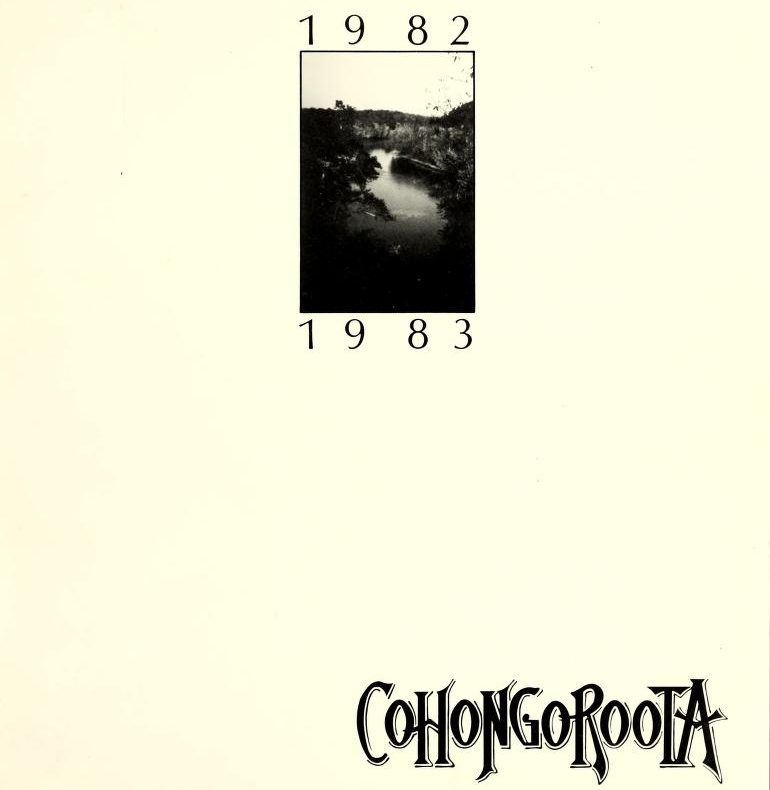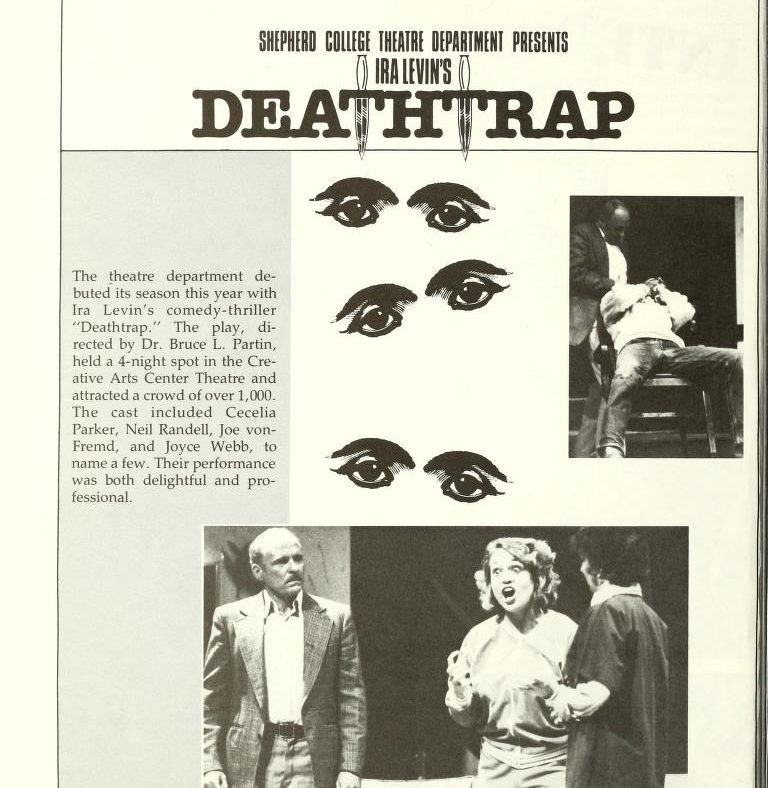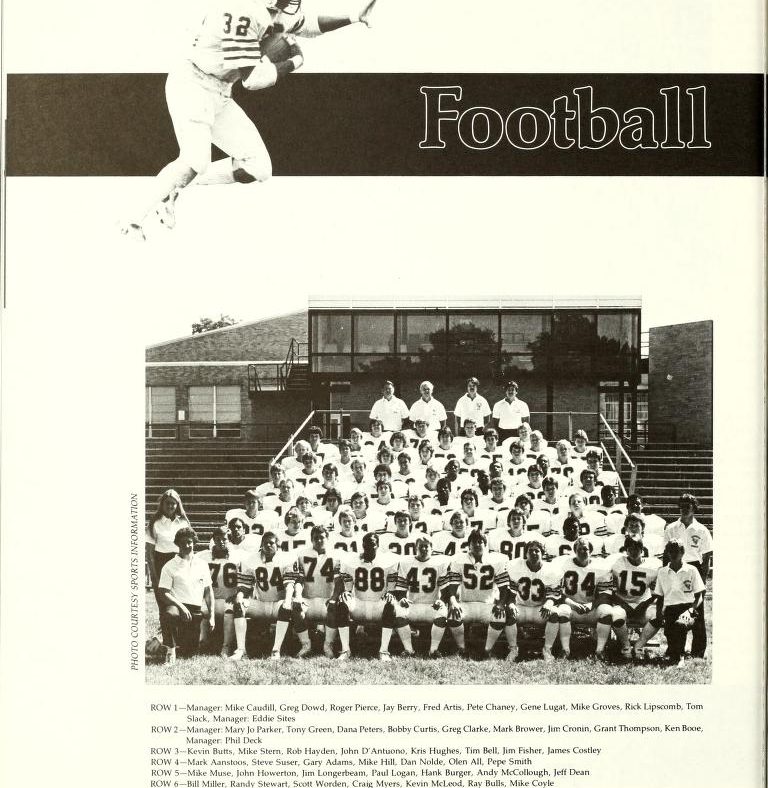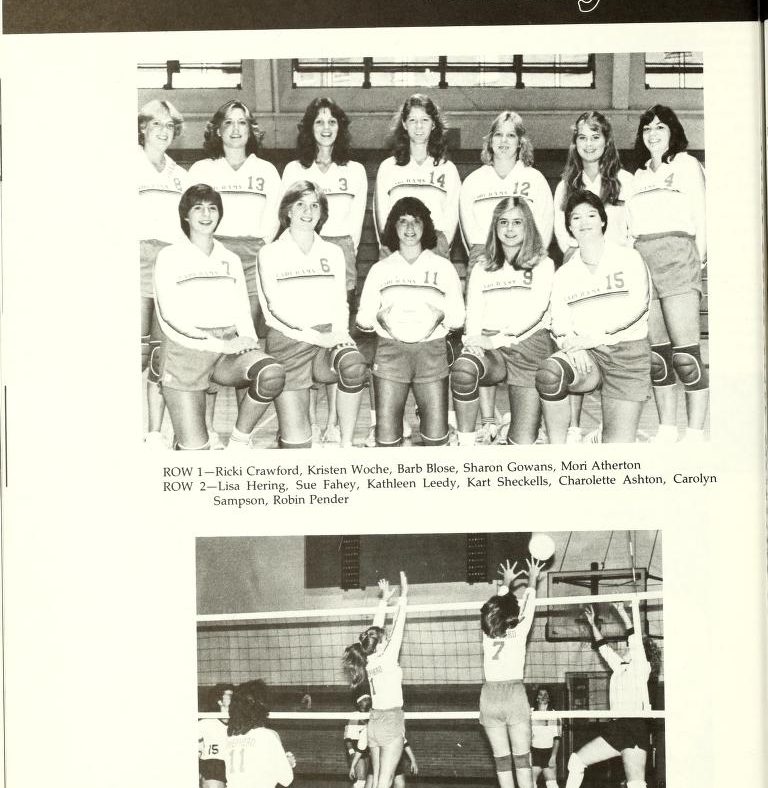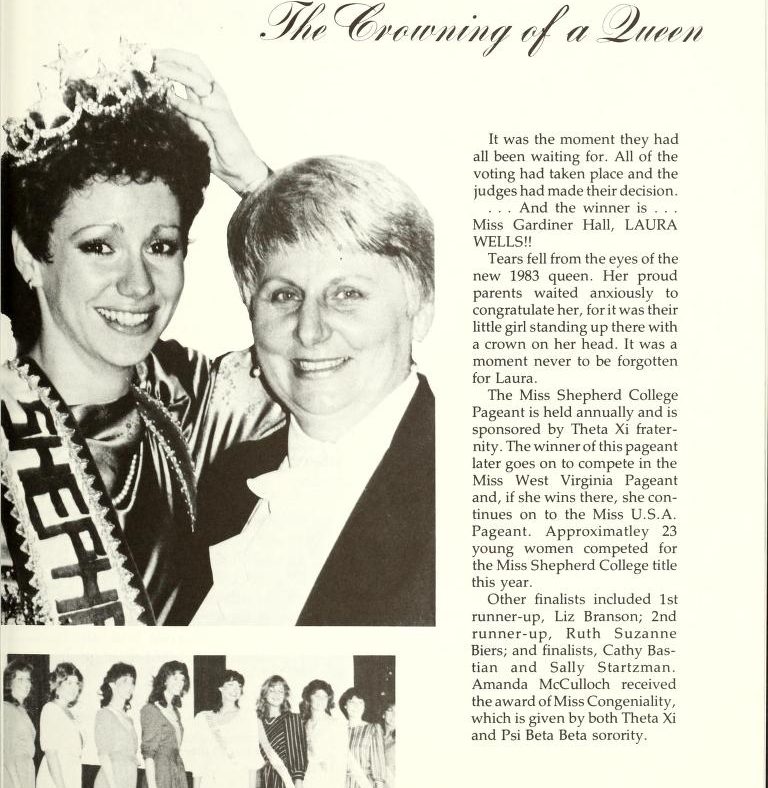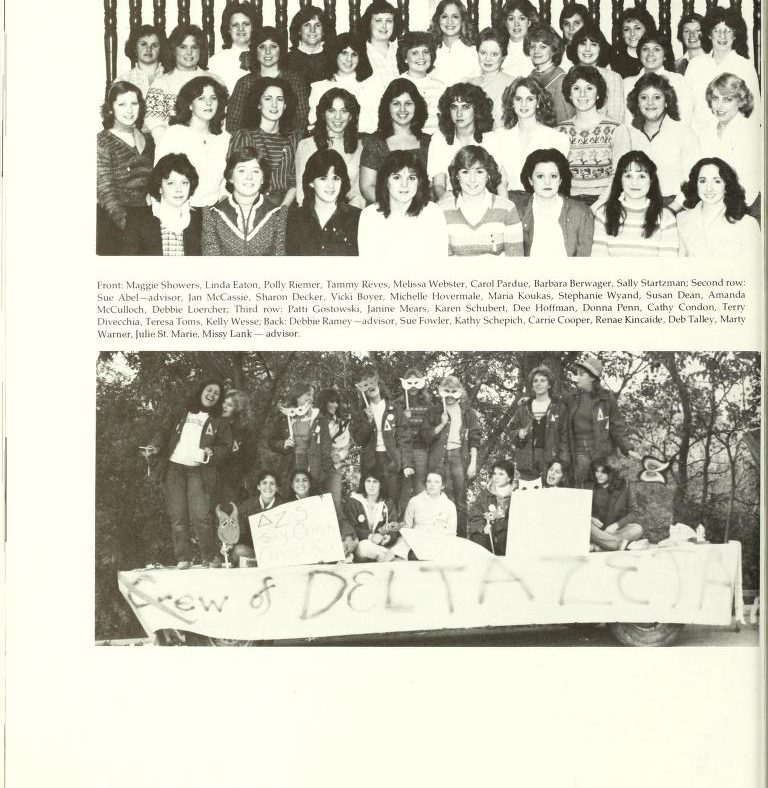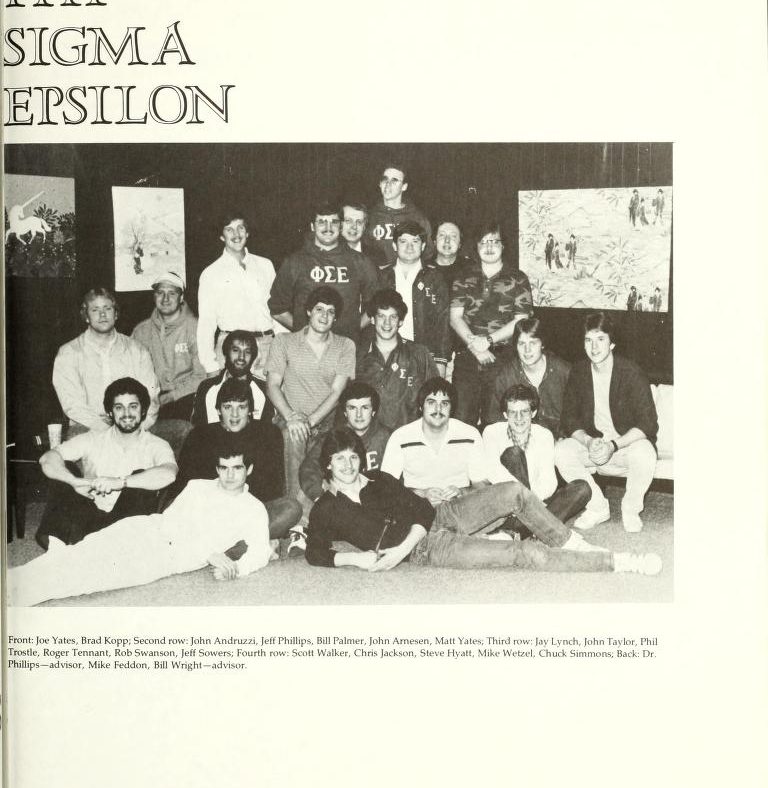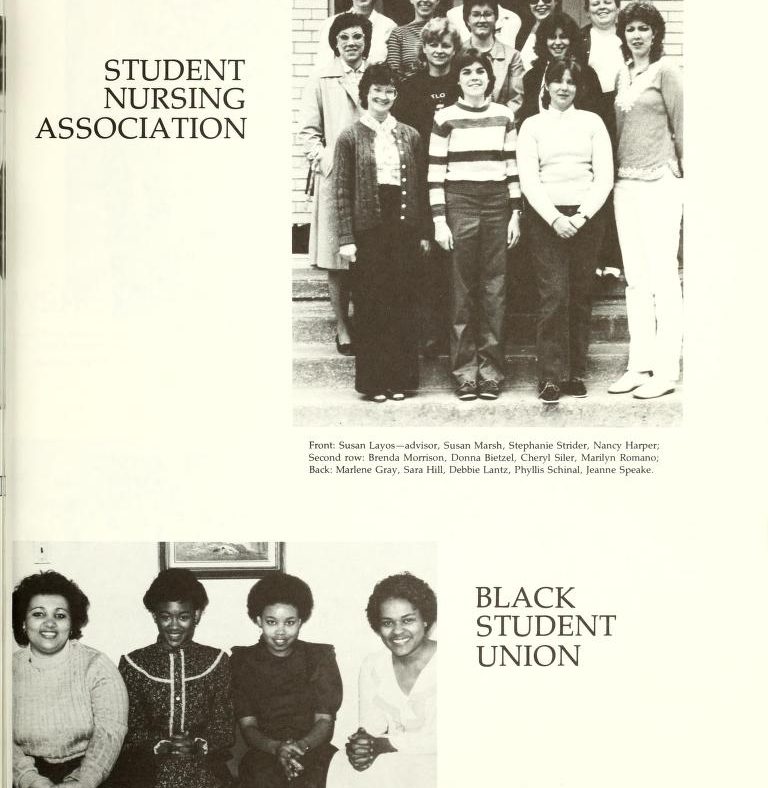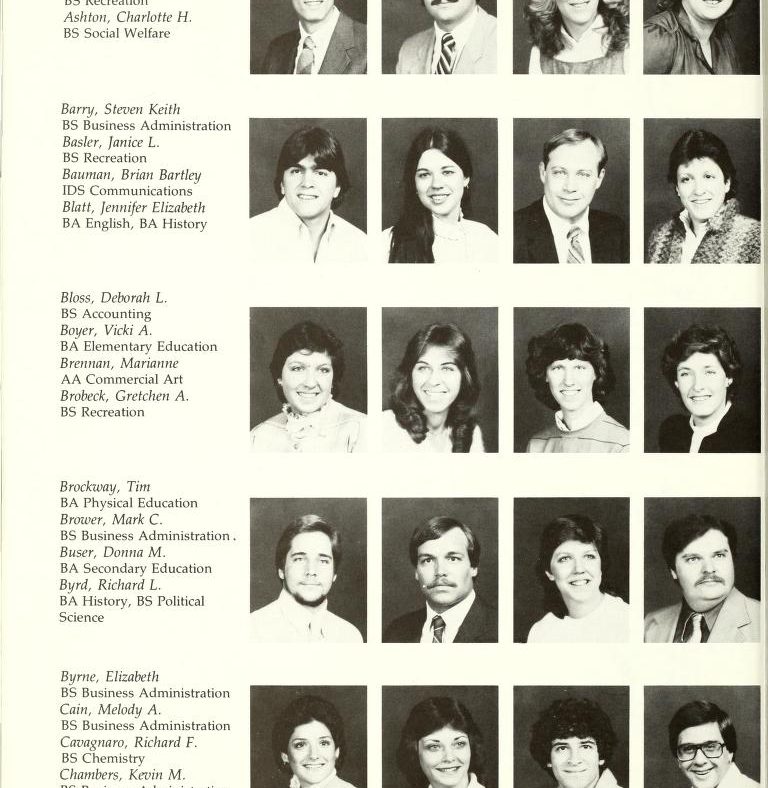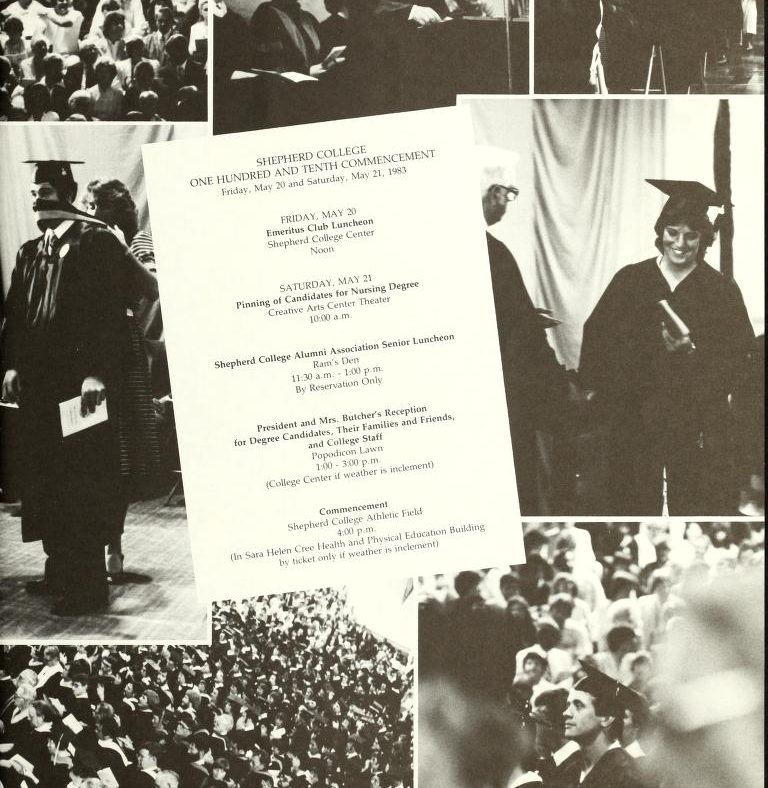Introduction:
The introduction in this case was very different from when the gap in production finished in 1949. There is no mention of lack of funds however, they do explain why the book was condensed and was made into a soft binding style. They state directly that this is due to the lack of funding. It is clear that over the years interest in the yearbook has dwindled. For example photos of leisure and fun on campus are rarer than in previous issues. Mainly, there are formal photos of the students. Also, photos of the organizations. I find it fitting too that they mention the lack of funding and this volume happens to be the last one ever produced (Cohongoroota, 1982, pg. 1). I feel as though it is clear that the lack of funding is the biggest contributor to the lack of a new yearbook.
Characteristics of an era
While flipping through the yearbook, it is abundantly clear when it was made. Due to the style of clothing in some of the photos there is no denying the 1980s style. This ties back in to our coursework in an interesting way. Through these yearbooks we are able to see styles through the ages. In the beginning of their creation, the yearbooks portray professionally dressed students. However, at some point there is a shift in attire. A lot of students appear to be wearing jeans or the like on a daily basis. Therefore, we can use these yearbooks as artifacts of student life here at Shepherd University.
Sports
In addition to the changing styles, Shepherd has also added to its list of sports since the original yearbooks. This edition also features various women’s teams as well! Women’s basketball, for example features on page forty. Again, a lot has changed from the first edition to the last as far as sports goes. When sporting teams were established, there were mainly baseball, basketball, and football. Over the years, women have also been included in sports as well.
Go Greek!
Along with that they have added quite a few fraternities and sororities. Some of which are still around today. This section of the yearbook was the longest and possibly highlights the fact that Greek Life was becoming more of a trend than in earlier years (Cohongoroota, 1982, pgs. 42-57).
Organizations
There also seemed to be the addition of many clubs. Student Government, Student Nursing Association, Black Student Union, Political Science Association, Home Economics, WSHC, and Shepherd Outing Club (Cohongoroota, 1982, pgs. 58-63). All of these show the union of various groups within the larger student body. They also show how the needs of the school changed over time. For example, Home Economics was still around. It seems as though that was a very static group. Also, there is now a BSU to accommodate the diversity that has been brought to campus. These changes also portray a greater need of campuses to fulfill the needs of a wide range of groups instead of just a select few.
Residence Life
The final groups I would like to mention is the photos illustrating each dorm (Cohongoroota, 1982, pg. 63-69). This can show the union of all types of students (dorms were however not co-ed yet) and how they adapt to become friends with one another over the course of their campus life. You can see there is no photo of the commuters. Therefore this can also portray a division, resident’s vs commuters possibly.
Seniors
Finally, another change is that instead of listing accomplishments and organizations, there are simply photos of what appears to be just the senior class. Along with their name and degree type. I assume the narrowing down to just seniors was due to a lack of funding.
The yearbook ends with graduation and quotes from the seniors.
Conclusion
Overall, this yearbook is relatively short in comparison to earlier books. It is mainly due to lack of funding, however, lack of interest also contributes as well. Due to both of these factors the Cohongoroota ceased to exist. Who knows though, maybe future students will express enough interest in creating an artifact for those that come after them. We may have not seen the last of the Cohongoroota!
